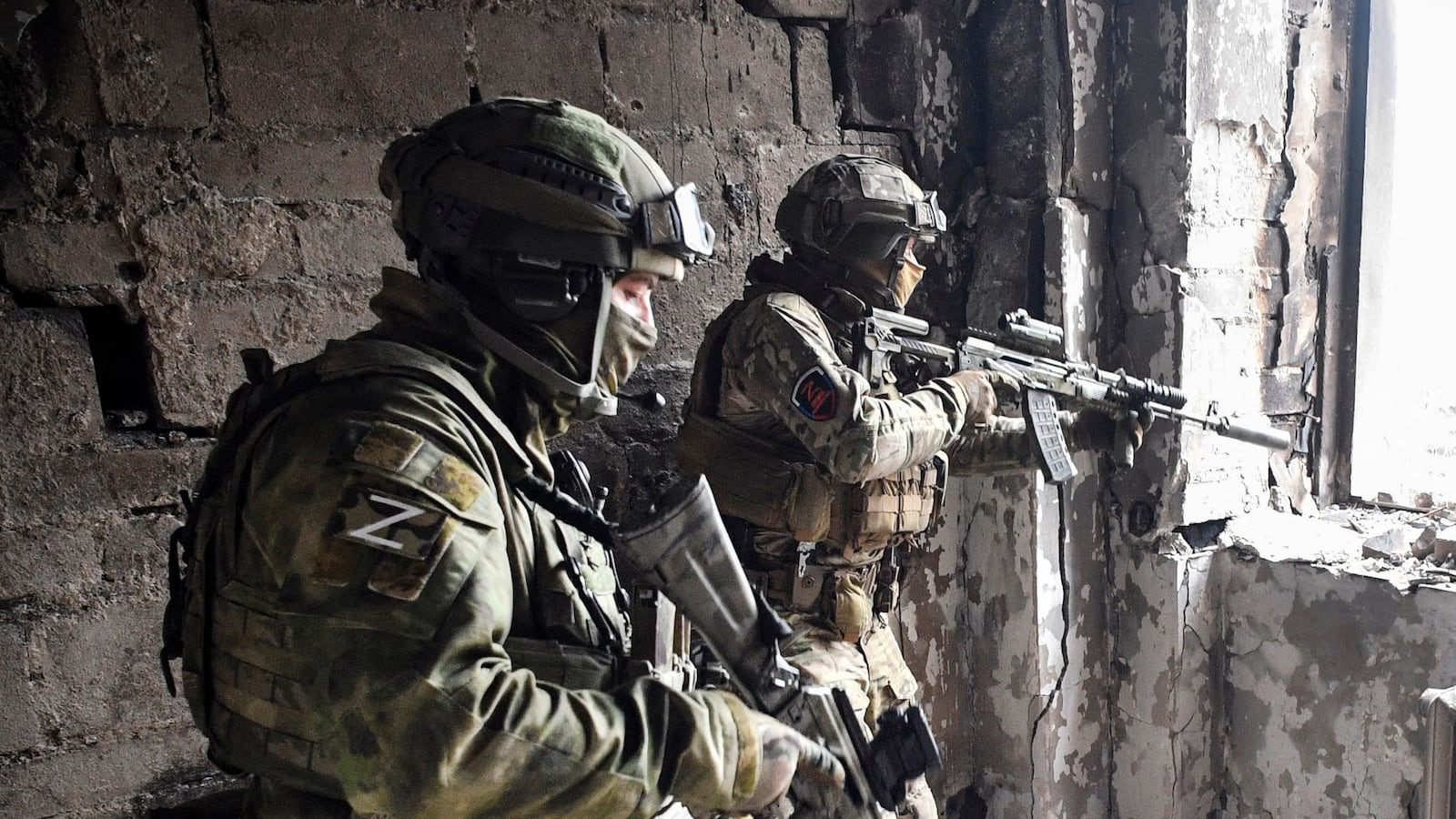Ukrainian officials claimed on Friday to have rescued hundreds more civilians who had been trapped in a besieged steel plant in the battered city of Mariupol.
An official in Volodymyr Zelensky’s presidential office said almost 500 civilians had now been evacuated from the Azovstal plant, although it was not clear how many were left there.
But for the 2,000 Ukrainian fighters thought to remain in the sprawling Azovstal complex, which features a maze of underground tunnels designed to withstand a nuclear attack, freedom is a distant prospect.
Mariupol’s last defenders face what could be the longest weekend of their lives as Russian forces—desperate to deliver something for Vladimir Putin to celebrate in Monday’s Victory Day celebrations—try at all costs to capture the plant.
Victory Day, marking the Soviet victory over Nazi Germany in World War II, was the biggest event on the Soviet calendar, with annual parades on Red Square featuring goosestepping Red Army soldiers and the latest Cold War tanks and missiles.
It’s lost none of its mystique in post-Soviet Russia, especially since Putin launched his ill-fated “special operation” to “denazify” Ukraine on Feb. 24. Many of those pouring over the border took their dress uniforms with them in their tanks and APCs, confident that they'd be parading through a “liberated” Kyiv within days—but 10 weeks later Russia has had no real victories in a conflict that has cost the lives of as many as 25,000 of its soldiers including dozens of senior officers.
The closest the Russians have come to victory is in Mariupol, the strategic port city on the Azov Sea that was among the invaders’ first targets. The city of almost half a million people has been virtually destroyed and thousands have been killed by relentless bombardment, including an estimated 600 people killed while taking refuge in a theater.
The city’s last defenders are holed up in the Azovstal steel plant, including units from the Azov Regiment, a fighting force that began life as a neo-Nazi paramilitary unit in the 2014 Donbas war but is now part of the Ukraine National Guard. When Kremlin propagandists talk of “denazification,” the word “Azov” is never far behind.
In its daily intelligence update on Friday, the British Ministry of Defence said Russian forces were continuing their ground assault on Azovstal, despite President Putin ordering that it be “sealed off” last week. “The renewed effort by Russia to secure Azovstal and complete the capture of Mariupol is likely linked to the upcoming 9 May Victory Day commemorations and Putin’s desire to have a symbolic success in Ukraine,” it said.
Ukrainian military intelligence (GUR) claimed on Thursday that Russia was planning to hold a Victory Day parade in Mariupol itself, to allow Putin to claim at least a tactical victory inside Ukraine. “The main avenues of the city are urgently cleaned, the debris and the bodies of the dead removed, as well as the ammunition which did not explode,” it said.
Most chilling of all, according to another Ukrainian official, the Russians were planning to take as many as 2,000 men being held in a nearby “filtration camp” and march them through Mariupol in a “war prisoners parade”—even though they are not actual prisoners of war.
“It will be a grotesque crowd scene for another propaganda image,” said Pyotr Andryuschenko, an aide to the Mariupol mayor.
Putin’s chief spokesman, Dmitry Peskov, on Friday denied that any parade was planned for Mariupol, although he said one would eventually be held there.
In the meantime, the Ukrainian soldiers in the Azovstal, running short on food, water, and medicine to treat their wounded, just cling on.
“They won’t surrender,” Kateryna Prokopenko, whose husband Denys is an Azov commander, told the Associated Press. “They only hope for a miracle.”
Prokopenko was speaking after a phone call with her husband in which he told her he would love her forever. “I am going mad from this. It seemed like words of goodbye,” she said.






